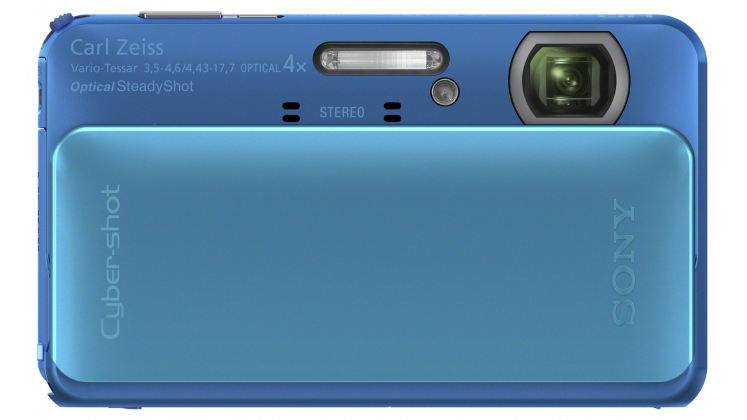TechRadar Verdict
Pros
- +
Stylish design
- +
Decent waterproofing
- +
Responsive AF system
- +
User-friendly
- +
Good colour reproduction
Cons
- -
Lens could be sharper
- -
Max aperture isn't very fast
- -
Aggressive noise reduction system
- -
Expensive
Why you can trust TechRadar
Sony's latest 'tough' compact camera, the TX20, boasts a pretty comprehensive feature-set, with a 16.2MP 1/2.3-inch Exmor CMOS sensor, Carl Zeiss 4x optical zoom lens, a 921,000-dot, 3-inch touchscreen LCD screen and Full HD movie recording.
On top of these features, photographers investing in the new Sony Cyber-Shot DSC-TX20 get the added benefit of being able to submerge the camera underwater (to a depth of up to 5m), drop it from a height of up to 1.5m and keep using it in temperatures as low as -10C (14F).
While these specifications may not quite match up to the top-notch tough credentials of the Olympus TG-1, for instance, the water/shock/dust/freeze-proof design of the Sony TX20 should provide more than adequate protection against the rigours of everyday life – with the added bonus of being presented in a stylish and compact body.
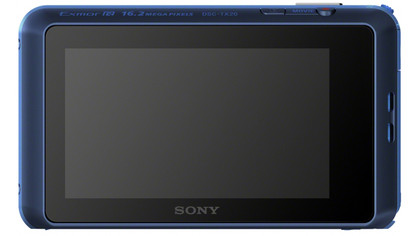
The Sony TX20 replaces the older Sony TX10, but there's little, if anything, to tempt owners of the previous model into upgrading.
But for those looking to invest in a rugged compact camera for the first time, the Sony TX20 - priced at £309 in the UK and $329.99 in the US - represents a keen contender in its field.
Build quality and handling
Far less chunky and cumbersome than your average rugged compact camera, the Sony TX20 is slim, stylish and perfectly pocketable. Just like its predecessor, the new camera sports a slender profile and neat sliding cover that conceals the lens, flash, stereo microphones and AF-assist lamp on the front of the camera when it's not in use.
Sliding the cover downwards reveals these hidden features and simultaneously powers the camera on, although you can also activate it using the power button on the top panel.
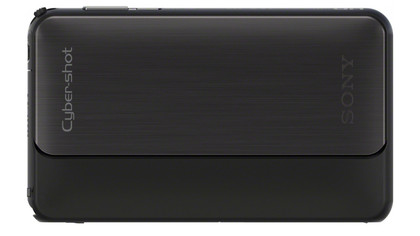
Outwardly, there's nothing to distinguish the Sony TX20 from the older TX10, save for the altered decals bearing the new model's name.
The controls – consisting of just the power button, plus a shutter release, zoom lever, playback and movie record buttons – remain in the same logical positions and are well-proportioned, making it easy to pick up the Sony TX20 and start shooting right away.
Around the back, the same 3-inch, 921,000-dot touchscreen from the TX10 remains in-situ. As before, the entirety of the widescreen-format LCD's surface area is only used when shooting movies. The rest of the time you're restricted to using the central portion of the screen, with black bars filled with interactive icons flanking it on either side.
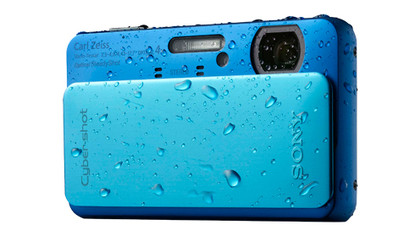
From here you can access and tweak most of the camera's key functions, including options such as the focus mode, flash control, burst mode and exposure mode, for instance.
The main menu icon in the top left-hand corner offers a quick route to the rest of the options on offer, with a stylish and clearly laid-out menu page materialising instantly.
The interface remains pleasingly simple, and the touchscreen is responsive enough to allay our fears brought on from past experiences with frustratingly nonreactive screens. However, the nature of the capacitive touchscreen means that its functionality is limited somewhat when operating the camera underwater.
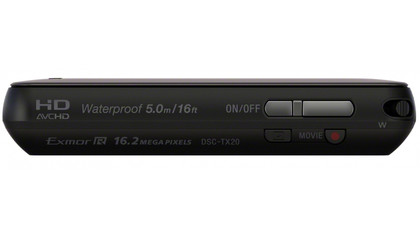
But our main concern is that – in spite of Sony's assurances about the toughness of the Cyber-Shot TX20 – we can't help but feel that the build quality isn't quite up to the calibre of some rivals. The sliding cover remains a concern when it comes to the possibility of getting dust, grit and/or moisture trapped beneath it, increasing the chances of inadvertently scratching the lens or the area surrounding it.
Likewise, the plastic covers protecting the SD card/battery compartment and the connection ports – although they do sport rubber seals to guard against water and muck getting inside – don't offer the same reassurance provided by the double-locking mechanisms on some competitors.
